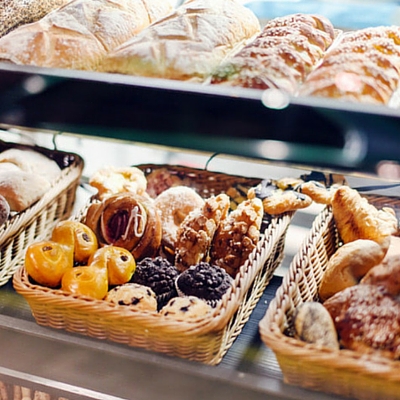Polysorbates
What are Polysorbates?
Polysorbates are an emulsifier and food additive that comes from a reaction of sorbitan fatty acid with ethylene oxide. The name includes a range of polysorbates, such as 20, 60, 65 and 80. However, Polysorbates 60 and 80 are the most commonly used in food production. They are used in baked goods and frozen desserts to help with:
- Extended shelf life
- Improved crumb color and strength
- Increased volume1
How do Polysorbates Work?
Polysorbates are very surface active, with a HLB value ranging from 14 to 16. They cause similar reactions as monoglycerides and diglycerides, but smaller quantities are used to produce the same results. Polysorbates are created by reacting stearic acid, sorbitol and ethylene oxide. They create a nonionic surfactant, with hydrophilic and hydrophobic ends. So it allows water and oil to mix, and gives oil-in-water emulsions. It can be combined with other HLB emulsifiers to create stable products, and works best with fatty alcohols.
Types of Polysorbates
The most common types of polysorbates are 20, 40, 60, 65, and 80, with the number representing the fatty acid associated with the polyoxyethylene sorbitan component of the molecule. The fatty acids are lauric (C14), palmitic (C16), stearic (C18:0), and oleic (C18:1). The lower numbers are more hydrophilic, while higher ones have higher lipophilic properties.
Application
Polysorbates are sold as a waxy, yellow paste that mixes easily. They are found in shortening, margarine, peanut butter, dry mixes, ice cream, dairy products, and baked goods.
Polysorbate 60 can be an effective dough conditioning agent at a level as low as 0.2 percent based on flour weight.2 Even better results can be reached if mono and diglycerides are used along with Polysorbate 60. To be soluble in water, it must be at 25 oC or 77oF.2
FDA Regulations
Polysorbates 60, 80, and 85 are allowed as a direct food additive in the United States, under clearly restricted levels and applications. While they are used around the world, some countries in the Middle East and Japan have not approved polysorbates.3
As a food additive, Polysorbates 60 and 80 must have an acid number between 0 to 2. There are different regulations on the amounts to be used as an emulsifier and coating agent or combined with other emulsifiers for polysorbate 60 and limitations on polysorbate 80 as a solubilizing, dispersing, and emulsifying agent, so be sure to check the full FDA stipulations.
References
- Evaluation Report of Food Additives: Polysorbates (Polysorbates 20, 60, 65, 80). Food Safety Commission, 2007.
- Langhans, R. K., and W. G. Thalheimer. “Polysorbate 60: Effects in Bread.” American Association of Cereal Chemists 48 (1969): 283-91.
- Whitehurst, Robert J. Emulsifiers in Food Technology. Oxford: Blackwell Pub., 2004. 179. Print.


